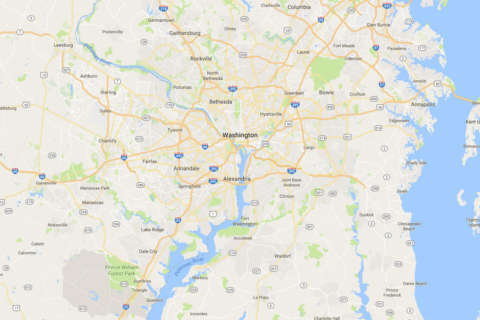FAIRFAX, Va. — The Virginia Department of Transportation has delayed a move to convert high-occupancy vehicle (HOV) rules on Interstate 66 until 2020, three years after tolls are introduced inside the Capital Beltway.
VDOT has suggested the conversion might happen when tolling began in 2017 during a meeting before the National Capital Region Transportation Planning Board in January. Under the Constrained Long-Ranged Transportation Plan, VDOT must convert I-66 from HOV-2 to HOV-3 by 2020.
“It’s part of our air quality commitments and changing it would risk us losing federal transportation dollars,” said Sharon Bulova, chairwoman of the Fairfax County Board of Supervisors.
There is a consensus among many across the spectrum that the delay is a good move.
“It’s a smart choice to say they’d start at two and move to three because slugging is a different culture,” said Arlington County Board Chair Mary Hynes. “Both for buses and slugs, you need places for that to happen outside of the corridor. This gives us a chance to get that infrastructure into place.”
Adding tolls and changing the HOV rules would eliminate the clean plate exemption, which allows certain hybrid vehicles to use the HOV lanes even without two people. The Coalition for Smarter Growth backs the delay as well, even though the group aims to get as many cars off the road as possible.
“This decision makes sense,” said Stewart Schwartz, Executive Director of the Coalition for Smarter Growth. “Delaying until 2020 puts it in sync with what they’re doing on I-66 outside the Beltway. We’ve recommended that VDOT do some market studies to make sure that HOV-3 is going to be effective and there will be demand for it.”
Even Fairfax County Supervisor Pat Herrity supports the move, although he has serious concerns with the overall plan on I-66 inside the Beltway.
“With HOV-2 and the hybrids — our HOV is just not working,” Herrity said. “We need to get that fixed. We’re going to need to go to HOV-3 in that corridor. It’s very unpopular, but if we want to move people through carpooling, then we need to go to HOV-3.”
Among those opponents are groups like the 66 Alliance.
“For owners of hybrid, electric and other clean fuel vehicles, that could mean you would pay tolls of up to $10,000 per year to continue to drive in the HOV lanes during rush hour,” the group wrote on its website. “HOV-2 carpoolers would be forced to find another carpooler, pick up an unknown passenger [aka “a slug”], or pay similar tolls to enjoy the same HOV privileges you currently take for granted.”
There could be one potential problem from the delay. Drivers will need an E-ZPass Flex transponder in HOV ON mode in order to get a free trip with two passengers, similar to the 495 and 95 Express Lanes.
But since the HOV-rules will not be in sync between 2017 and 2020, vehicles with two people will have to remember to turn on the HOV mode on I-66, then turn it off before entering the 495 or 95 Express Lanes.
If a driver were to forget to turn off the HOV mode when exiting I-66 for the Capital Beltway, he or she could be subject to a ticket for an HOV violation on the Express Lanes. The first violation carries a $125 fine and then it escalates up to $1000 for a fourth offense.





